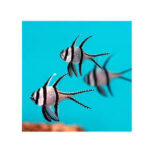The dragon has been a pervasive symbol in Chinese culture, recognized not only for its power and majesty but also for its deep connections with religious practices, beliefs, and institutions. In Chinese religion, mythology, and spiritual traditions, the dragon is often revered as a divine or semi-divine figure, wielding significant influence over both the physical and spiritual realms. This article explores the multifaceted role of the dragon in various religious contexts in China, examining its relationship with Chinese folk religion, Taoism, Buddhism, and Confucianism, as well as its role in imperial power and rituals.
1. The Dragon in Chinese Folk Religion
Chinese folk religion, a complex and diverse system of belief that predates formal religious institutions, is the primary context where the dragon’s spiritual significance is most visible. In this tradition, dragons are often viewed as deities or powerful spirits that oversee important natural elements, particularly water, weather, and fertility. They are believed to be able to influence the flow of rivers, lakes, and seas, bringing prosperity and bountiful harvests, while also having the ability to unleash floods and storms when angered.
1.1 Dragons as Water Deities
In many folk beliefs, dragons are considered the rulers of water, capable of controlling the rain and storms. Rivers, lakes, and seas are seen as the domains of dragons, and they are thought to be responsible for the health of these water sources. As such, they are integral to agricultural cycles, especially in regions where irrigation and rainfall are crucial to crop growth.
A well-known legend in Chinese folklore, the Dragon King’s story, illustrates the importance of dragons as water deities. The Dragon King, or Long Wang, is often depicted as a ruler of the four seas and a deity capable of controlling weather patterns. The Dragon King is also believed to control rain, which is especially important for farmers in agricultural societies. As a result, temples dedicated to the Dragon King have been built throughout China, and rituals to honor this deity are still practiced today, especially during times of drought or when water-related issues threaten communities.
1.2 Dragons and Ancestor Worship
In Chinese folk religion, ancestor worship is an essential practice, and dragons often appear in rituals honoring ancestors. The dragon’s symbolic connection to the emperor and its status as a celestial creature that bridges the earthly and divine realms align with the concept of ancestor spirits providing guidance and protection. The idea is that dragons, being divine protectors, can aid in ensuring the safety and well-being of the deceased’s spirits, ensuring that their legacy endures and their descendants prosper.
2. The Dragon in Taoism
Taoism, one of the major religious and philosophical traditions in China, also holds the dragon in high regard. Taoist beliefs emphasize harmony with the natural world, the cultivation of Qi (vital energy), and the pursuit of immortality. Dragons play a key role in Taoist cosmology, symbolizing both the spiritual and natural forces that practitioners seek to understand and control.
2.1 The Dragon and the Taoist Concept of Qi
In Taoism, the dragon is often depicted as a symbol of Qi, the life force that flows through all living things. The dragon’s serpentine body, ability to fly through the heavens, and power over natural forces such as water and wind embody the dynamic flow of Qi in the universe. Taoist philosophy teaches that the cultivation of Qi through practices such as Tai Chi, Qi Gong, and meditation can lead to spiritual growth and, ultimately, immortality.
The dragon’s power over the Qi of nature is seen in Taoist rituals aimed at aligning oneself with the forces of nature. By channeling the dragon’s power, Taoist practitioners believe they can tap into the essential energy that governs the universe, bringing health, longevity, and spiritual enlightenment.
2.2 The Dragon as an Immortal Being
In Taoism, dragons are sometimes associated with immortality. Taoist mythology tells of powerful dragon immortals who live in the celestial realms, exerting control over the cosmic forces of the universe. These immortals are believed to possess profound wisdom, and their guidance is sought by practitioners striving for spiritual ascension. The dragon’s ability to transform and transcend the limitations of the physical world mirrors Taoist beliefs about the possibility of transcending death and achieving eternal life.
2.3 The Dragon and the Taoist Alchemical Process
Taoist alchemy, which aims to transform the practitioner’s physical body and spirit into a more refined, immortal state, also incorporates the symbolism of the dragon. In some Taoist texts, the dragon is associated with the elixir of immortality, the goal of Taoist alchemical practice. The dragon’s power to change form and shape is seen as a metaphor for the alchemical process of transforming the body and soul. The image of a dragon, symbolizing energy and transformation, is often used in Taoist art and sacred texts to represent the ultimate goal of alchemical practice: the achievement of immortality.
3. The Dragon in Buddhism
Buddhism, which arrived in China from India around the first century CE, also incorporates the dragon as a significant symbol. While dragons in Buddhist tradition are often seen as protectors of the faith, their role differs somewhat from their position in folk religion and Taoism. In Buddhism, dragons are frequently portrayed as guardians of Buddhist teachings and are often associated with the protection of sacred texts and Buddhist practitioners.
3.1 The Dragon as a Protector of the Dharma
In Buddhist legend, dragons are sometimes depicted as fierce protectors of the Dharma, the teachings of the Buddha. In one well-known story, a dragon in the form of a Naga protects the Buddha’s teachings from being lost or defiled. In this context, dragons are not only guardians of sacred knowledge but also symbols of the wisdom and compassion that are central to Buddhist teachings.
The Naga, a serpent-like creature often associated with dragons in Chinese Buddhism, is believed to have been present during the Buddha’s meditation under the Bodhi Tree. The Naga, understanding the profound nature of the Buddha’s enlightenment, offered protection and shelter to him during his meditation. As such, dragons in Buddhism are seen as noble beings capable of safeguarding those who seek enlightenment.
3.2 The Dragon as a Symbol of Fertility and Abundance
In Chinese Buddhism, the dragon is sometimes associated with fertility and abundance, reflecting its role as a rain deity. Buddhist monks and practitioners in China may invoke dragons in prayers for a prosperous life or for protection from calamities such as drought or famine. The belief that dragons control the elements of water and nature links them to the Buddhist ideal of abundance and spiritual prosperity.
3.3 The Dragon’s Connection to Bodhisattvas
In some Buddhist traditions, dragons are closely linked to the worship of Bodhisattvas, enlightened beings who have made vows to assist others in their path to enlightenment. The most notable example is the relationship between dragons and Avalokiteshvara (Guanyin), the Bodhisattva of compassion. Dragons are believed to offer their protection and blessings to those who honor Avalokiteshvara and follow the Bodhisattva’s path of compassion.
4. The Dragon in Confucianism
Confucianism, as a system of moral philosophy rather than a religion, has a more symbolic relationship with the dragon. In Confucian thought, the dragon represents the highest moral qualities, such as wisdom, virtue, and righteousness. As a symbol of imperial authority, the dragon is often seen as embodying the ideal ruler, one who governs with wisdom, integrity, and compassion.
4.1 The Dragon as a Symbol of the Emperor’s Authority
In Confucianism, the emperor is viewed as the “Son of Heaven,” with the divine right to rule over China and its people. The dragon, with its regal and majestic qualities, is closely associated with imperial power, as it embodies the authority of the emperor. The imperial throne and the emperor’s robes were often adorned with dragon motifs, signifying his connection to heaven and his duty to rule in accordance with Confucian ideals of virtue and justice.
4.2 The Dragon and Moral Leadership
Confucianism teaches that a ruler’s role is not merely to govern but to act as a moral leader, guiding the people toward righteousness and virtue. The dragon, representing the supreme qualities of wisdom and justice, is seen as a model for the ideal Confucian leader. A wise and just ruler, like the dragon, is expected to bring prosperity to the people and maintain harmony in the kingdom, ensuring that the society functions according to heavenly principles.
5. Conclusion
The dragon occupies a central position in Chinese religious thought, acting as a powerful symbol of divine energy, protection, wisdom, and authority. Whether in the folk beliefs tied to natural forces, in Taoist concepts of immortality and Qi, in Buddhist teachings on protection and compassion, or in Confucian ideals of leadership, the dragon embodies the essential values and spiritual aspirations of Chinese religious traditions. Through these religious relationships, the dragon has transcended its mythological roots to become a living, breathing force in the spiritual and cultural life of China, continuing to inspire and guide generations.










